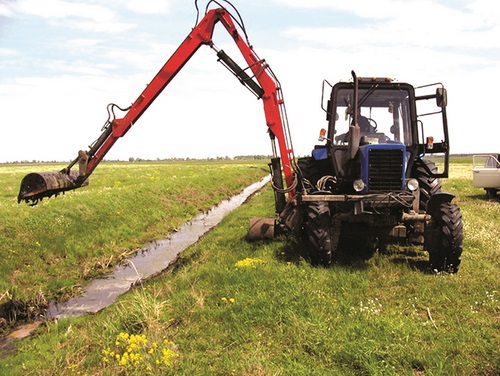Many factors contribute to the problem, including the ‘warm breath’ of global warming. Over the past two decades, over ten droughts have been recorded in Belarus: unusual for our latitude. The Head of the Biological and Landscape Bio-Diversity Department at the Ministry for Natural Resources and Environmental protection, Andrey Kuzmich, admits that around 20 types of soil degradation are currently registered in Belarus. These include wrongful use of agricultural lands, which become salted and waterlogged as a result, suffering from over-salination.

Land deserves to be taken care of
The situation looks even more drastic when we take note that Belarus boasts 0.56 hectares of plough land per person, placing it among the top 20 in this sphere. Specialists characterise our lands as having non-homogeneous soil and low levels of ecological sustainability, making them susceptible to change. The building of road networks (stretching 85,000km across the country) creates even more problems for croplands.
Melioration (realised on a global scale not so long ago) has resulted in drained lands which now need attention. “Drained lands function well if melioration systems ensure their proper state,” believes Mr. Kuzmich. “This is the sphere of responsibility of the Agriculture and Food Ministry and the regional executive committees, which inspect these systems every five years, reconstructing them as necessary. If an approach is conscientious, systems function well; if it’s bad, then soil becomes damaged. According to preliminary data, in recent times, the territory of such lands has grown by 12 percent. Water and wind erosion is another problem: over 500,000 hectares of land ‘die’ from these factors annually, influencing crop harvests. Yields may fall in volume between 5 and 60 percent!”
The Belarusian Government is soon to draw up a draft national plan of action, aiming to realise the UN Convention on Land Degradation and Drought, launching from 2016-2020. Of course, similar documents have been signed in the past but Mr. Kuzmich explains that new regulations are to be implemented not by agencies (as previously) but proactively at state level.
Previously, ecologists found it difficult to monitor the situation effectively, Mr. Kuzmich admits. He explains that the new documents envisage continuous monitoring. Sadly, the most recent water and wind erosion data was gathered in 2000, as part of a major study; since then, no more has been collected. He tells us, “To assess the current state of affairs, we need to involve human and financial resources, which isn’t simple. The strategy aims to identify priority territories and to establish a system for monitoring and registration.”
The document also envisages other measures: not merely to save Belarusian croplands but to avoid further harm. Innovative agro-technologies, the development of organic farming and reduced use of pesticides should all alleviate the burden on soil. According to Mr. Kuzmich, territories and croplands which cannot be saved could be turned into new forests and marshes over time, as has been achieved in Belarus in the past.
By Veronika Artemieva












